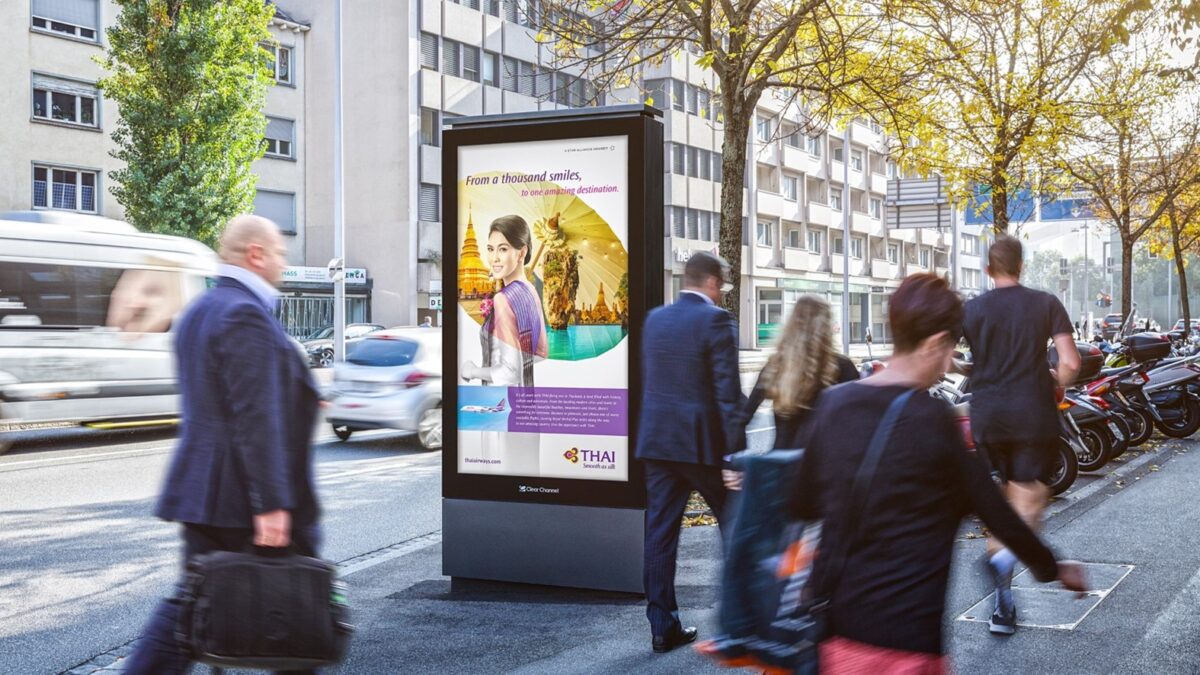Mobility Data and OOH
What the latest mobility trends tell us about the near future of outdoor advertising
The COVID 19 pandemic is not quite in the rear-view mirror yet, but there is a lot of optimism that life is getting back to normal – or at least some of it. One of the key indicators of this is consumer mobility, which is almost back to pre-pandemic levels. In other words: After more than a year of spending much of their time at home, people are finally moving back in step with the economy, which is on its way to full recovery. Here we take a closer look at the latest trends in consumer mobility and explain why now is the time to book your OOH advertising buys before prices rise.
What do the current trends in consumer mobility tell us?
Looking at dashboards like the Google Mobilitäts Index, which quantifies how far mobile devices move each day on a national, cantonal and regional level, it is easy to see that people are no longer simply staying at home. The index provides insight into consumer mobility trends.
Although relaxations are only gradually being made in a multi-stage plan to mitigate the lingering effects of the pandemic – in conjunction with the vaccination campaign that is currently underway again – it is safe to say that we have reached the point where the whole country is moving at a “normal” pace again. However, the mere fact that people are increasingly leaving their homes again is only part of the equation. To really understand how consumer behaviour has changed in the face of the ongoing pandemic, you have to take a closer look at how people are actually moving around.
This is where the Apple Maps Mobility Trend Reports come in. By looking at data from the early 2020s to the present, we get a clearer picture of how consumers changed their mobility habits at different points during the pandemic – whether due to newly imposed restrictions / lockdowns, as a result of rising case numbers, or as a by-product of seasonal fluctuations or adverse weather conditions. The reports show how consumer movement patterns changed at different points during the COVID-19 pandemic. What is most interesting, however, is that walking and driving have recovered significantly in the last year and in some cases are well above baseline levels, while public transport travel is still nowhere near pre-pandemic levels when looking at the data nationwide.
How does mobility affect OOH?
Outdoor advertising has always had an above-average status within the media industry in Switzerland, even if for a long time it could not keep up with the other classic media in terms of contacts and reach. Even if frequency data and performance values were determined late and introduced as a research standard, it has been shown that mobility and OOH are strongly interrelated. While it was previously difficult, due to a lack of live data, to achieve higher prices with higher traffic/people volumes or lower prices with lower frequencies, it then became apparent during the CORONA crisis at the latest that mobility does have an influence, namely when investments in 2020 fell by up to 25% (in some cases by up to 90% every month).
Currently, all signs indicate that not only mobility is getting a massive boost, but also the advertising industry, which will bring prices in outdoor advertising back to a normal level.
So it’s time to book OOH and DOOH while prices are still good and availability is given.
Google, Apple and Intervista have taken the discussion about data in OOH to a new level with their COVID mobility analyses. While we first talked about digital eye tracking factors for classic, static traffic frequencies in 2019, the call for so-called real time data is growing today. Here, however, it is not only issues such as data protection and the industry’s willingness to pay that pose a challenge, but also the timeliness of technologies and systems when you think about the amount of data. Big data is now also finding its way into outdoor advertising.
